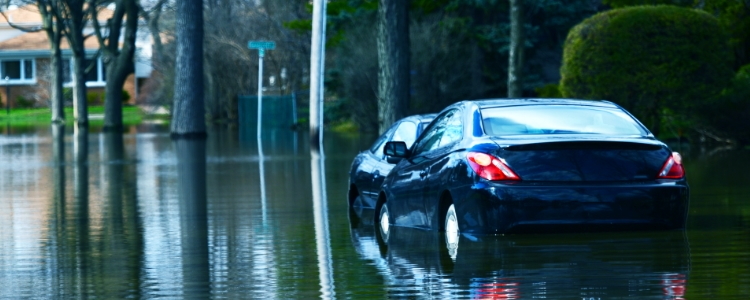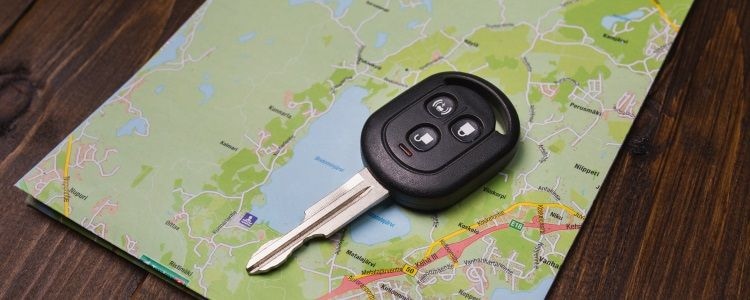Consumers with problem credit looking for online auto loans can be especially susceptible to financing used cars with water damage as a result of Hurricane Sandy
What we know
It's been proven that car buyers with bad credit hoping for easy financing for cars are especially open to being taken in by sellers pushing used cars with hidden damage.
Here at Auto Credit Express we know how this could happen because for the past twenty years we've been helping consumers with damaged credit find those new car dealers that can offer them their best chances at auto loan approvals.
Used cars
Most consumers with problem credit will choose to finance a used car with their auto loans. These vehicles are typically more affordable than new cars (according to Consumer Reports, new cars can lose up to 47 percent of their value in the first three years) and with the high quality of modern vehicles, it's also a smart choice.
But buying used also carries with it the risk that the vehicle chosen isn't what the seller states it is. In fact, one Experian Automotive study revealed that "more than 2 percent of the late-model used vehicles (model year 2005 and newer) had a negative vehicle history event (frame damage, salvage, odometer rollback, etc.), which can significantly impact the vehicle's value."
The report also noted that buyers with low FICO scores are even more at risk noting that "more than 3 percent of financing outside of prime had negative vehicle history."
Hurricane Sandy
Since this "negative vehicle history" includes flood damage, used car shoppers need to be especially cautious as vehicles that were damaged by Hurricane Sandy are still out there since, according to an article from NBC News, "Sandy might send more than 250,000 cars to the scrap heap."
According to Edmunds.com, this is what can happen:
"When the flood waters recede, they often leave behind damaged cars, and that's where trouble can begin for used-car buyers. After the owners of damaged cars settle up with their insurance companies, vehicles are sometimes refurbished and resold. And sometimes, a middleman buyer intentionally hides a car's history as a flood-damaged vehicle through a process known as ‘title washing' and sells it to an unsuspecting buyer in a state unaffected by the disaster. Electrical and mechanical problems then surface later — long after the seller is gone — leaving the new owner with an unreliable car and no recourse against the seller."
What you can do
So what can the buyers of used car do - especially those with less than perfect credit - to avoid buying a vehicle that's suffered water damage?
The first step is to do some investigating. Here are some tips from NADA:
1. Be alert to unusual odors. Musty or moldy odors inside the car are a sign of mildew buildup from prolonged exposure to water. It might be coming from an area the seller is unable to completely clean. Beware of a strong air freshener or cleaning solution scent, as it may indicate the seller is trying to cover up something. Run the air-conditioner to see if a moldy smell comes from the vents.
2. Look for discolored carpeting. Large stains or differences in color between lower and upper upholstery sections may indicate that standing water was in the vehicle. A used car with brand-new upholstery is also a warning sign, as a seller may have tried to remove the flood-damaged upholstery altogether.
3. Examine the exterior for water buildup. This may include fogging inside headlamps or taillights and damp or muddy areas where water naturally pools, such as overhangs inside the wheel wells. A water line might be noticeable in the engine compartment or the trunk to show that the car sat in standing water.
4. Inspect the undercarriage. Look for evidence of rust and flaking metal that would not normally be associated with late-model vehicles.
5. Be suspicious of dirt buildup in unusual areas. These include areas such as around the seat tracks or the upper carpeting under the glove compartment. Have an independent mechanic look for caked mud or grit in alternator crevices, behind wiring harnesses and around the small recesses of starter motors, power steering pumps and relays.
Secondly, visit the National Insurance Crime Bureau web site at https://www.nicb.org where the VIN number of the vehicle can be entered to see if it has been reported as a stolen or salvage vehicle.
If the report is clean, the next step should be to order a vehicle history report from either Carfax or AutoCheck (Experian).
Finally, if it clears those hurdles, have it inspected by an ASE Certified Master Mechanic as well as a body and frame specialist. This can cost anywhere from $100 to $200, but consider it money well spent as it could end up saving thousands of dollars in repair bills if the vehicle in question turns out to have hidden damage of any kind.
The Bottom Line
Credit-challenged consumers are far more likely to finance a vehicle with hidden damage than other buyers. Following all the above steps can prevent that from happening.
Another important thing to remember: Auto Credit Express specializes in helping applicants with car credit issues find those dealers that can give them their best chances for approved auto loans.
So if you're ready to reestablish your auto credit, you can begin now by filling out our online auto loan application.


















